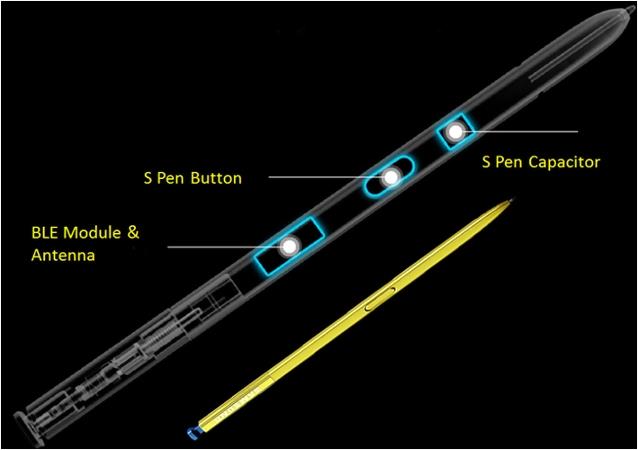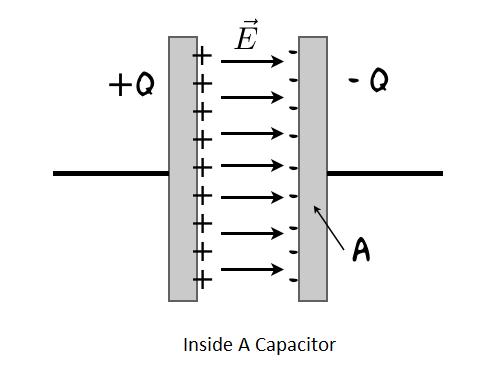The Galaxy Note9’s S Pen is Bluetooth compatible and its remote functions are operated via Bluetooth. Because of this the S Pen does need to be charged to keep working.
Samsung say on their website that when the S Pen is fully charged it will last for about 30 minutes, or let you make around 200 clicks.
When the S Pen is fully depleted or discharged, Air command and Writing/Drawing can still be used.
When the S Pen falls below 20% charge capacity you will see a notification on the Note9’s screen. Below is how you can see the exact charge level of the S Pen using Remote settings:
- Open the Air command menu with the S Pen and tap ‘Settings’ in the upper left corner
- Tap ‘S Pen remote’, and the battery will be displayed at the top of the page.
To charge your S Pen simply insert it into its resting position within the body of the Note9, this starts the wireless charging process. The charging process takes 40 seconds.
To power to the S Pen’s Bluetooth module, a supercapacitor or Super Capacitor has been integrated into the S Pen instead of a normal lithium-ion battery. This super capacitor does not hold as much charge as what a lithium-ion battery would do but the charging time is considerably shorter, in fact Samsung say that fully charging takes about 40 seconds.
The S Pen’s super capacitor (which ifixit.com found to be a K8373 Seiko Instruments supercapacitor ) charges wirelessly when it’s inserted into your Note9. It only takes about 40 seconds to fully charge the S Pen.
Image Credit ifixit.com
Due to the fact that the S Pen is inserted and pulled out frequently and is used usually used for a short amount of time when it has been pulled out, this form of charge storage and its quick charging is very appropriate for this application.
The advantages of using a super capacitor over a battery are as follows:
- Because it doesn’t require a chemical reaction to charge or generate electricity, the life cycle of a super capacitor is very much higher than a battery.
- Unlike a battery, a super capacitor can be charged and discharged almost indefinitely. Batteries have a defined cycle life but, there is very minimal wear by cycling a super capacitor. A super capacitor’s service life, or load life, can reach 10 to 15 years or more (see this resource for more information).
- Super capacitors of this size charge in seconds
- Super capacitors are environmentally friendly.
The wireless charging process for the S Pen works by creating a magnetic field between the coil inside the Note9 and a coil inside your S Pen. The S Pen must be inserted completely into the device for the charging process to commence.
Image Credit Samsung
Charging the S Pen will do little to drain your Note9’s battery even when our S Pen is fully discharged as it only takes about 0.5 mAh to fully charge the S Pen. Considering the battery capacity of your Note9 this is very insignificant and will not have any major impact on the Note9’s battery life.
The Note9‘s S Pen cannot be charged by a normal wireless charger the type of charger that would charge your Note 9 because the charging method, although wireless is not the same.
What Is A Capacitor?
Without going to heavily into the physics behind how they work, a capacitor is a device that stores energy via a static charge. The main difference between a battery and a capacitor is that a battery generated electrical current by a chemical reaction whereas a capacitor, has two metal plates, a positive metal plate and a negative plate. The voltage differential between the plates provides an electrical current. Below is a simplified diagram of a capacitor’s plates.
A super capacitor is a high-capacity capacitor with a capacitance value much higher than other capacitors. A super capacitor typically stores 10 to 100 times more energy than an normal electrolytic capacitor and can accept and deliver charge much faster than batteries.
Latest posts by Campad Electronics (see all)
- Create a Wireless Charging Surface at Home for Less Than $50 - July 9, 2024
- Meet The Telstra 5G Hotspot - May 22, 2024
- Bringing the Future to the Past: Galaxy AI Features Roll Out to Samsung’s Last-Gen Phones - April 15, 2024

 Follow
Follow


